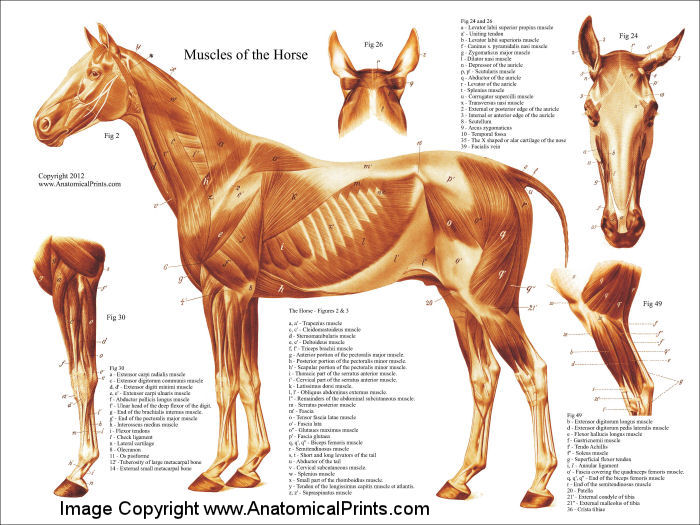
Horse Muscular Anatomy Poster
Points of a horse Equine anatomy encompasses the gross and microscopic anatomy of horses, ponies and other equids, including donkeys, mules and zebras.

Horse Muscle Anatomy Poster Wall Chart 18 X 24 Etsy
The horse's musculoskeletal system consists of the bones, cartilage, muscles, ligaments, and tendons. Their primary function is to support of the body, provide motion, and protect vital organs. There are 205 bones in the horse's skeleton. Twenty of these bones are in each foreleg and 20 in each hind limb, for a grand total of 80 bones in.
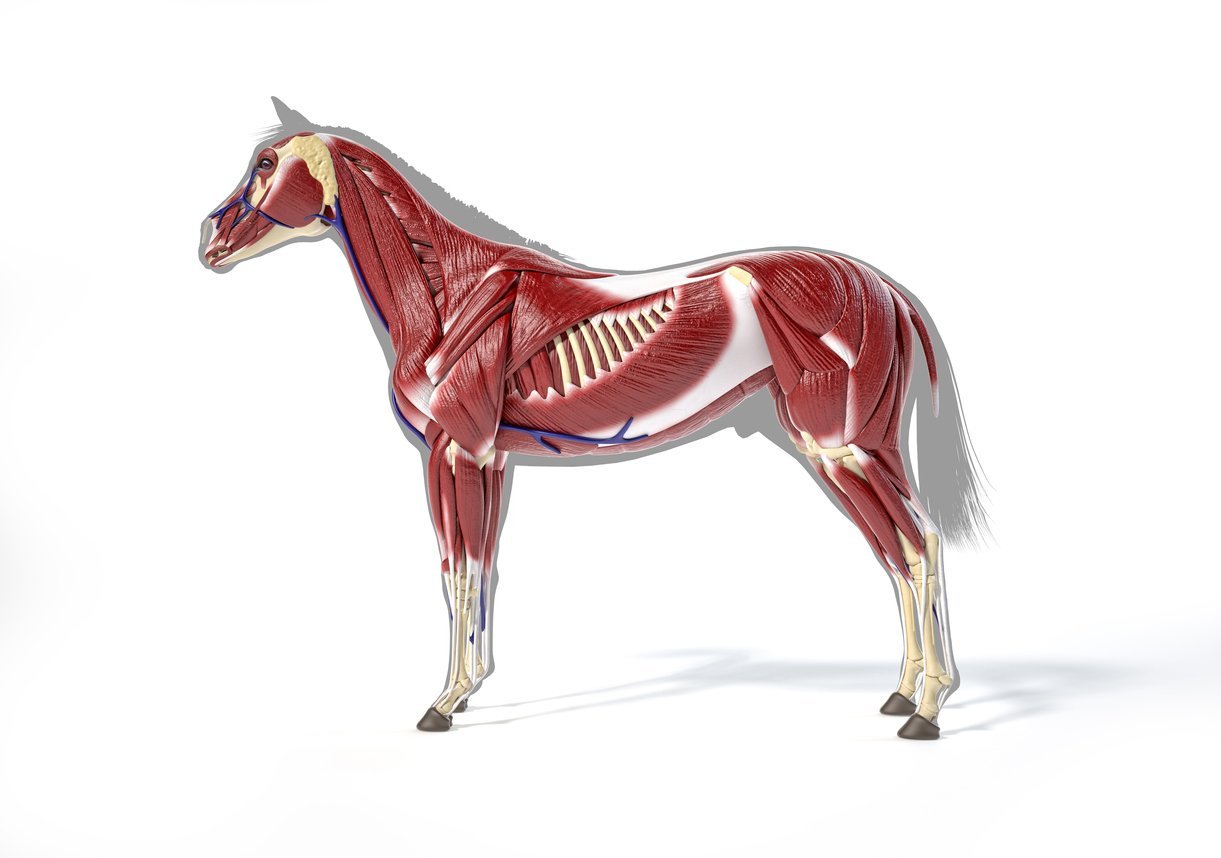
Complete Guide on Horse Muscle [Domestic & Sport]
Muscles of the forehand. Opens and closes the jaw. Allows chewing. movement. Too strong a. forward, raises it in collection, swings the foreleg forward. rein contact stops free forward movement. Moves the head and neck. Over developed in ewe or bull necked horses, difficult to get into a relaxed shape.

THE ACTION OF MUSCLES
19. Understanding how muscles work is one of the most fundamental concepts that can influence how we ride and train our horses. Movement is created by the skeletal muscles pulling on the bones to operate the joints. Every bone is moved by a muscle. The muscles cross either one joint or several. The longissimus dorsi.

A4 Veterinary Poster Muscles of the Horse (Animal Anatomy Picture
In this article, we will also speak about the horse's skeleton and muscles. You should be able to draw a square on a proportionally built horse - however, as we prove later on while discussing each body part, in reality, horses differ from one another and usually stray from that ideal proportions.

Image result for horse muscles diagram Horse anatomy, Dog anatomy, Horses
The Equine Muscular System The muscles of the body are responsible for creating movement whether it be via the skeletal muscle, smooth muscle, or cardiac muscle. Agonist muscles contract and are the primary mover. While antagonist muscles work by counteracting the agonist muscle therefore creating a balanced and stable movement.

Equine Superficial Muscular System Poster Muscular system, Equines
Muscles are tissues in your horse's body that allow your horse to walk, gallop, jump, and canter. In essence, horse muscles are the foundation of all movement, so it's key that you learn how to maintain animal muscle health if you want your horse to live his best life. Unfortunately, horses can develop muscle diseases known as myopathies.
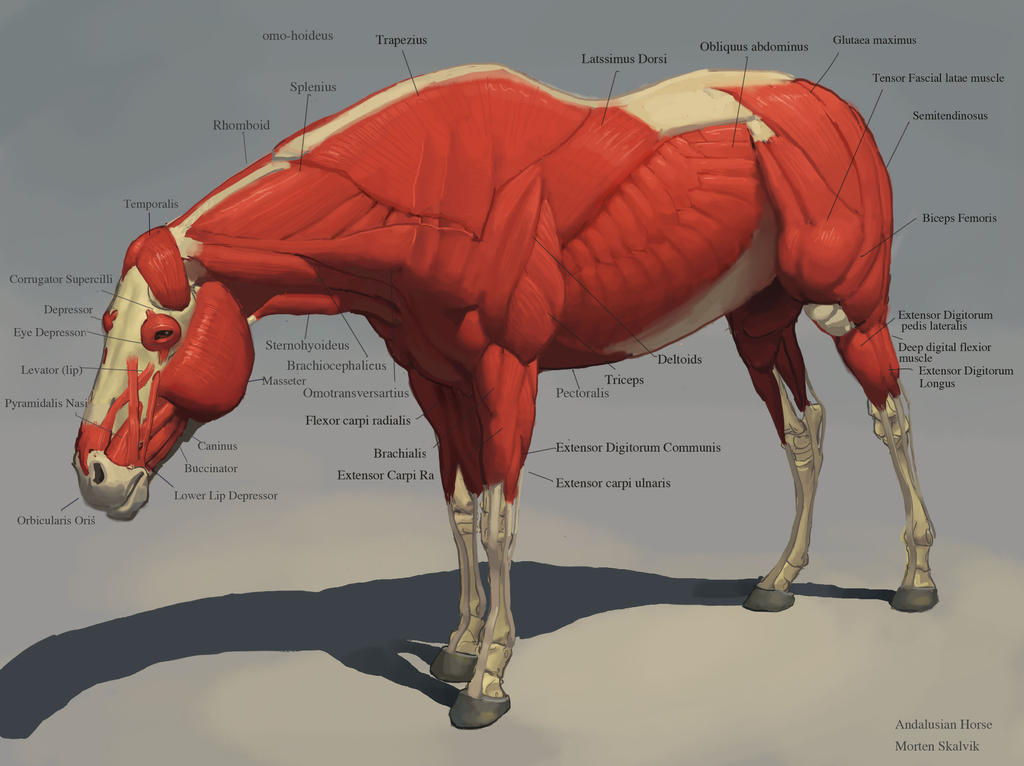
Horse Muscles by awesomeplex on DeviantArt
Since a horse's legs are made up of a finely tuned system of bones and joints, ligaments and tendons, muscles and connective tissue designed to carry a relatively heavy body, good conformation coupled with healthy limbs is extremely important for proper function.. Learn equine anatomy terms by visiting the Equine Anatomy Project. About the.
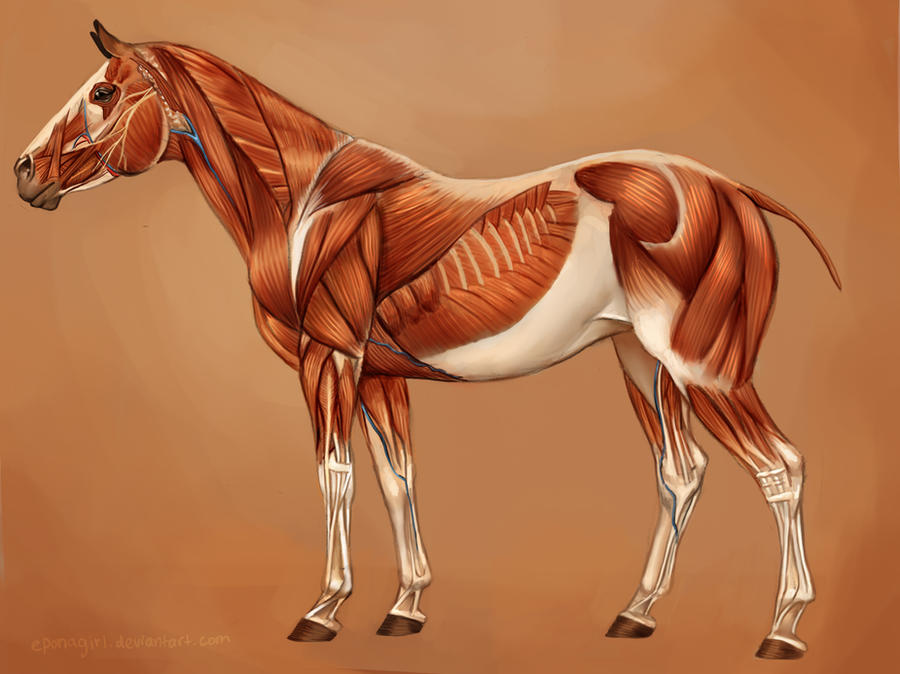
Horse Muscles Reference by EponaN64 on DeviantArt
Understanding the Equine Muscular System November 24, 2021 Posted by Stacey Oke, DVM, MSc The horse's body possesses approximately 700 muscles that control movement. By understanding how.
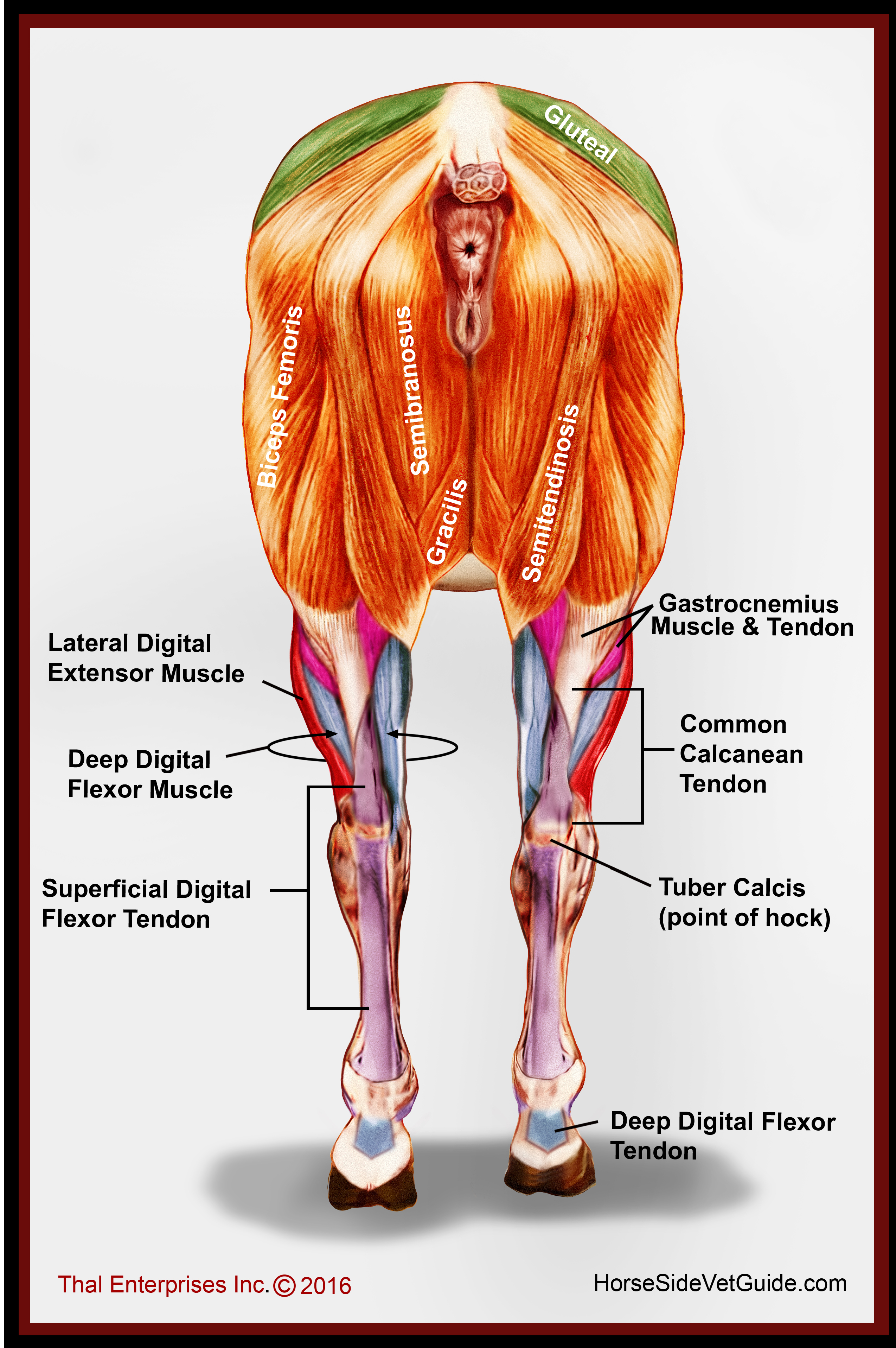
Database Record Viewer Horse Side Vet Guide
Tendons are tough bands of connective tissue made up mostly of a protein called collagen. They stretch very little. Tendons attach each end of a muscle to a bone. At selected points, they are located within sheaths that allow them to move easily. Ligaments are also tough cords formed of connective tissue.

Equestrian and Horse Anatomy Deep Muscles
Anatomy Pelvic hind limb bears 40-45% of the weight and provides the majority of propulsion for locomotion. Bones Os coxae The Tuber coxae and tuber sacrale both palpable Tuber ischii is located underneath the hamstrings Femur Greater trochanter has a cranial and caudal part for gluteal attachments (deep & middle)

Horse Anatomy the Muscles by COOKEcakes on DeviantArt
What and where is the Iliopsoas muscle group? The Iliopsoas Muscle Group lies deep within each side of the body. The group is made up of 3 muscles, the Psoas Major, Psoas Minor and Iliacus. They attach onto the ventral, (underside) of the lumbar spine and pelvis as well as the top of the thigh bone.

Equine deep musculature anatomy chart Horse anatomy, Equine
Here, I will show you some of the important muscles of the horse body. If possible, I will add some other horse muscle pictures in the future. Horse anatomy digestive system. You will find many peculiar characteristics in the horse anatomy digestive system. I will provide some peculiar anatomical features from the horse's digestive system.

animal muscles Cerca con Google Anatomie, Pferd, Reiten
In this course you will learn about the position and the function of some of the most important muscles and tendons of the horse's locomotory system, including: The most important muscles of the horse's neck and trunk. The most important muscles of the horses fore- and hindlimbs. The tendons on the horse's distal limbs. The passive stay.
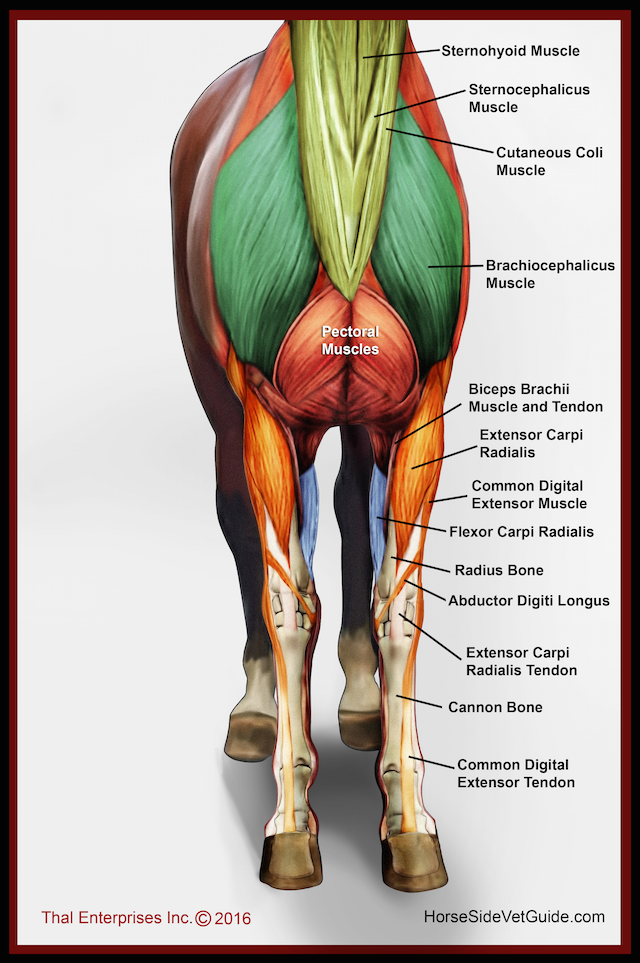
Vitals & Anatomy Horse Side Vet Guide
Anatomy The Iliopsoas muscle group is comprised of the Psoas Major and the Iliacus muscle. Psoas Major Origin: Transverse processes of the lumbar vertebrae Ventral surface of the proximal ends (underside of the top) of the last two ribs. Insertion: Lesser trochanter of the femur. It is here where it fuses with the Iliacus. Innervation:
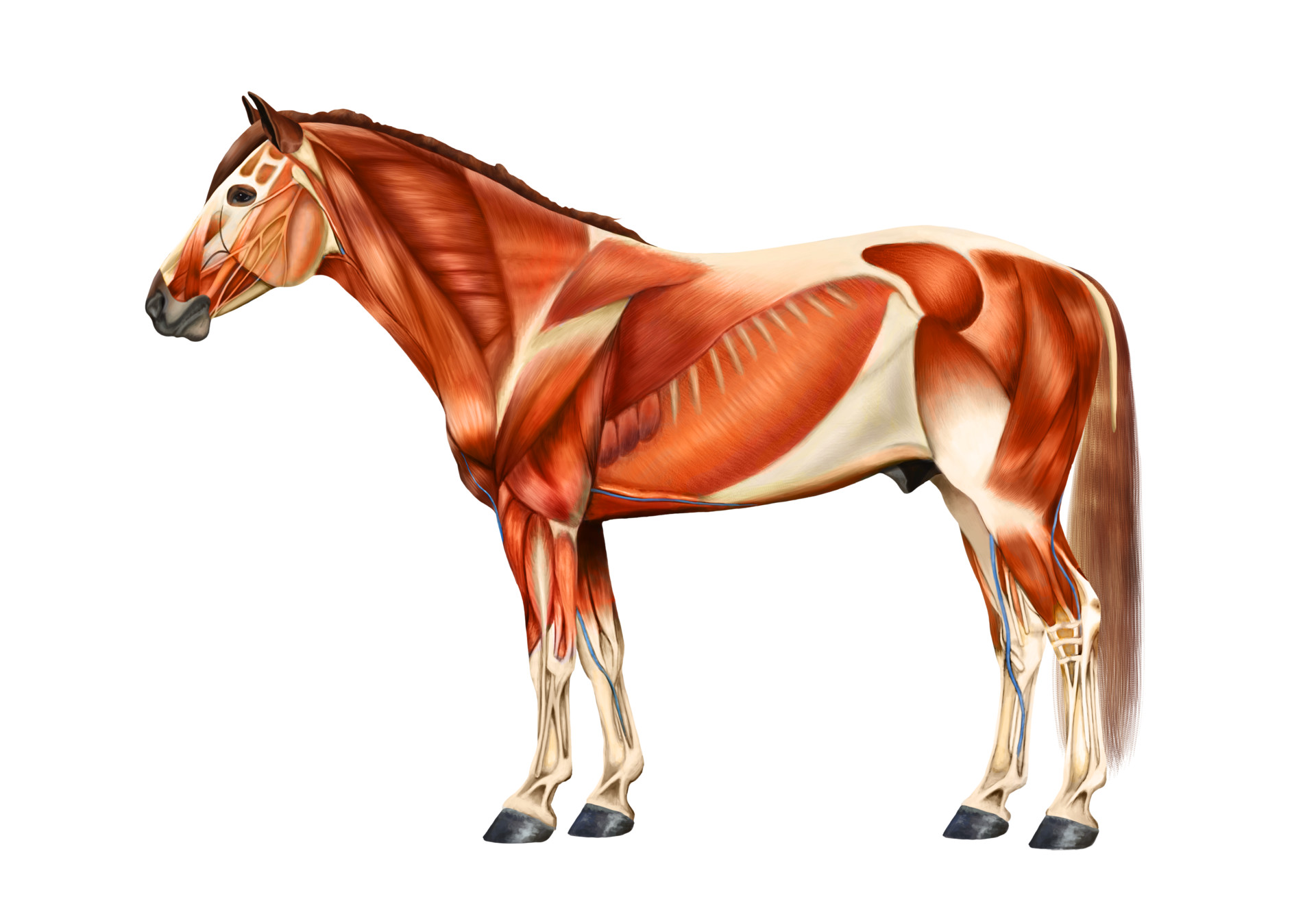
ArtStation Horse muscle anatomy
This article will provide an overview of the key muscle groups in horses, including muscles of the head, neck, front legs, back, hind legs and tail. It will explain how these various muscles contract and relax to create movement.